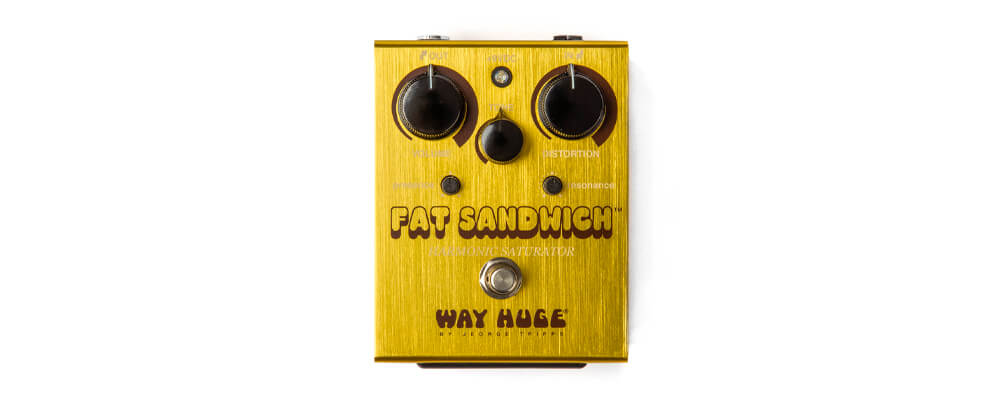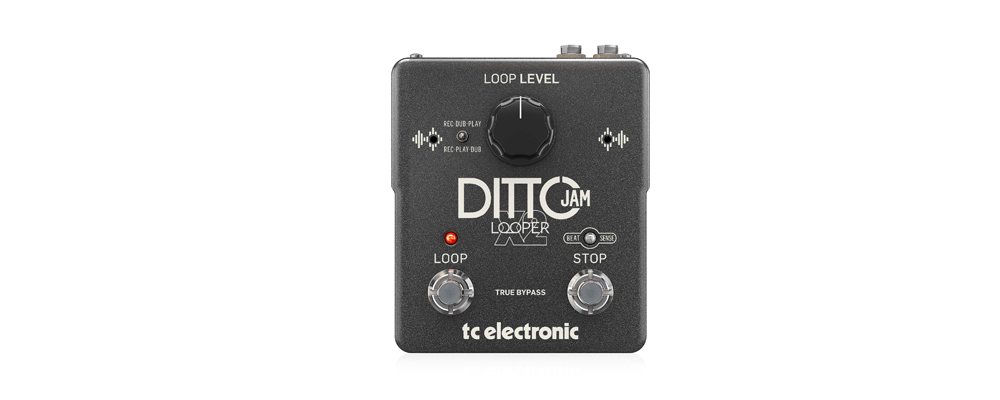Do guitarists really need effect pedals? While some cynics might consider them an unnecessary addition to your set-up, we think they add dynamics and edge to your sound. Colour in your guitar lines down to the most specific embellishments and emulate your heroes with effect pedals.
Shop our Guitar Pedal Collection for Beginners
Still, if you’re just finding your footing in the guitar world, pedal shopping is daunting. Especially with so many different types of pedals in the market – make and model notwithstanding. Don’t know how to start building your first pedal board? Then look no further! Consider this post your quintessential introduction to the world of effects pedals. What is a guitar pedal? What are the basic models to get you started? This is our guide to guitar pedals for beginners.
Read more: Swee Lee Welcomes Pigtronix
What is a guitar pedal?
Guitar pedals, also referred to as effects pedals, effects units, or stompboxes, are nifty gadgets that alter your guitar tone. You step on them to activate their internal circuitry. And based on what types of pedal you’re using, they work by distorting, modulating, driving, or reverberating your guitar tone.
While your guitar’s original sound and the amp you’re using both contribute to your overall sound, a guitar pedal can take textures and tonal intricacies to another level. A typical beginner pedal rig usually includes common effects like reverb and overdrive, along with a few non-standard sounds.
Do I need a guitar pedal?
Strictly speaking, it depends on how and when you’ll be using it. Most guitarists use pedals to shape and build specific tones and sounds for different purposes. Big on sonic experimentation? A stompbox setup is usually the perfect playground for adventurous musicians and gearheads.
How do I set up a guitar pedal?
It all revolves around the signal flow, which is the path from the guitar to the amplifier. Generally, this pathway should be a straight line and anything added to that line will affect the signal. To get started, plug your guitar cable into the pedal, then connect another cable from the pedal directly into the amp.
If you’re using several pedals at once, shorter patch cables will help link them all up. Longer cable runs aren’t as effective, as the signal has to travel a greater distance, resulting in a weakened output.
Guitar Pedals for Beginners #1: Tuner pedals

Learners, take heed. We highly recommend this to be your first pedal purchase. Tuner pedals are indispensable, keeping your guitar in tune without the need to go through each string individually. While you might be tempted to stick with your guitar’s built-in tuner, or a clip-on tuner, those aren’t as reliable in louder environments like gigs or concerts. Tuner pedals give players a piece of mind, allowing you to completely mute your signal and focus on tuning your guitar – a godsend if you’re switching guitars. Finally, if treated right, a quality tuner pedal will last you till the end of your guitar playing days.
Guitar Pedals for Beginners #2: Gain pedals
Gain pedals typically slot into the beginning of your signal chain, forming the foundation for you to build the rest of your tone. There are too many gain effects to list, but they’re incredibly versatile. You can keep your gain effects simple on extended signal chains, or layer up gain-based effects to craft harmonically-diverse tones. Gain staging is important in ensuring that your guitar’s ideal output is minimally interrupted by unwanted noise and distortion.
Boost

Boost pedals are very simply, an amplifier in a box. These pedals are typically used to boost amps and other overdrive effects by means of an extra-hot signal. Alternatively, these pedals are also used to compensate for the signal loss that occurs over long cable runs, or crowded pedal chains – in which they are often placed at the end of a pedal board.
While some boost pedals come with tone-shaping capabilities, most models come with a single volume control and footswitch. We recommend you pair these pedals with other types for some added juice.
Read more: Teisco’s New Pedals for 2020 Have Landed
Overdrive

Familiar with the sound you hear when gain is funneled into an amp or when a tube amp has its volume levels turned all the way up? That’s the overdrive pedal for you. Think crunchy, broken-up tones that sizzle in pop, rock, and metal tunes.
Most overdrive pedals have two gain stages. The first is the input volume which lets you control the intensity of your effect. The second output volume affects the pedal’s settings on the rest of the signal path. While some overdrive pedals also feature treble, bass, and other tone-shaping functions, you’re more likely to see these pedals feature control functions meant for cutting off higher frequencies.
Distortion

A distortion pedal is its own beast. At the press of a foot, it clips a guitar’s output signal for a dirty and heavy sound. No matter how much you lean into the strings, the level of distortion remains the same – giving you unparalleled consistency. Musicians commonly introduce distortion when transitioning between lighter verses and hard-hitting choruses for that spike of energy.
Compression

If you’ve ever done studio work, you might have come across compressors. Compression pedals are no different. Essentially, they decrease your guitar’s dynamic range by lowering the volume of signal that goes above a certain threshold. Set a compressor to boost the output, and you’ll achieve a sustain. Lengthen the delay for a punchier tone that gives lower-end notes more articulation and definition.
Guitar Pedals for Beginners #3: Time FX pedals
Reverb

Whether stitched onto vocals or instrumentation, reverb adds space to your sound. Some pedals feature classic analogue reverbs such as springs and plates, while others feature synthetic reverbs that mimic the effects of being in empty rooms, churches, and other spaces.
Reverb control settings vary from pedal to pedal, so you’ll see certain models with single setting controls and other models with a battery of digital levels. These pedals also often have settings for decay, which determines how quickly your reverb fades out, as well as a wet/dry balance which controls the amount of reverb you want in your tone.
Delay

Want to employ slap-backs and dallying in your playing? Look no further than the delay pedal. Delay takes your guitar’s original, incoming signal and repeats it for a period of time. With a delay pedal, take full control over the duration of each delay, along with feedback (the number of times delay is repeated). You can also modify the balance between the incoming and outgoing delay signals.
The type of delay is determined by a pedal’s internal circuitry or digital software. Analogue pedals from back in the day used tape loops or a cluster of bucket brigade chips to produce unique harmonics, and distinct decay characteristics. Today, modern delay pedals are outfitted with multiple styles and lines (taps) that produce various effects that won’t degrade like tape echos or analogues do.
Read more: 5 High-End Delay Pedals Compared
Guitar Pedals for Beginners #4: Wah-wah pedals and envelope filters

The phrase “wah-wah” should give you a pretty good idea of what these pedals are for. These pedals produce vocal-style articulations by gliding a resonant peaking filter across the narrow frequency spectrum. Typical wah-wah pedals use foot treadles to sweep the filter. Bring your heel down to release a bass-heavy fuzz. Lift your heel up for a brighter, tinny treble. One of the most iconic effects pedals out there, all-time greats like Jimi Hendrix, Metallica, and Frank Zappa have all included it in their music.
Envelope filters, sometimes called auto-wah pedals, were designed to recreate the wah-wah’s choppy rhythm. They work like automatic filters, cutting off different frequencies based on your level of input. Pick or strum gently for a lighter effect. Lay on an aggressive hand, and the degree of distortion becomes greater. Unlike the wah-wah, you don’t have to play and control the pedal with your foot simultaneously. It’s an easier way to put your sound on auto-pilot.
Arguably the most diverse gizmos of the bunch, pedals that rely on time-based effect dominate contemporary genres. From soothing ambient noises to mind-bending spacey textures, they can be either incredibly realistic or jarringly artificial. Depending on your personal taste, pedals that ooze surf guitar serenity are probably going to be totally different from those that facilitate growly, metal leads.
Guitar Pedals for Beginners #5: Volume pedals

As the name implies, these practical pedals control the volume of your instrument. They can completely mute sound, generate smooth swells to add ambience, or create interesting dynamics like subtle fade-outs. You can insert a volume pedal anywhere in your signal path, but most setups usually have them somewhere towards the end of the gain stage array for seamless transitions.
Guitar Pedals for Beginners #6: Modulation pedals
Let modulation pedals sit in a sweet spot between frequency and time-based effects on your pedalboard. Modulation affects gain staging, time, and frequency via their low-frequency oscillator (LFO). The part of the signal that the LFO regulates is what you’ll need to determine when experimenting with the modulation pedal of your choice.
Chorus and Flanger

Many pedals choose to combine flanger and chorus effects, and it’s easy to mistake both effects for each other. So what differentiates them?
Flanging mimics the act of de-synchronising two tape reels by altering incoming signals and their frequencies through delays and modulation. This results in a swooping sound you can customise with in-built controls for modulation rate, depth, and feedback.

Chorus effects are similar to the flanger in that they modulate a delayed signal, but with much more delay and next to no feedback. Expect a shimmery and broad tone, featuring oodles of delay. Chorus is also primed for more complex controls such as wider depth and rate controls making it bigger on pronounced effects and delay than the flanger.
Phaser

Quirkily-titled phasers add a slew of movement to tone but can also bulk up individual notes. Some are even capable of approximating jazzier effects like the sound of a rotary speaker. Everyone from Eddie Van Halen to Radiohead has featured phasers in their compositions, so it’s definitely a crowd-pleaser. Check out the intro to Van Halen’s Atomic Punk if you want a taster of a well-placed phaser.
The quintessential phaser sound is generated by mixing two identical signals (dry input and all-pass). An all-pass filter’s position can be moved around using an LFO, creating a swirling sensation. Although classic phasers were equipped with a single rate control feature, modern phasers have upped the game with depth control, level, and speed/rate dials. Depth modulates peak and trough size to warp tone, level blends wet/dry signals, and speed controls LFO rate. They also come with feedback controls to determine the amount of output signal being fed back into the input.
Guitar Pedals for Beginners #7: Looper pedals

Good news, loopers are pretty easy to master. Step on the footswitch to start recording, and then step on it again for the recorded riffs to replay on end. Of course with technological advancements, today’s looper pedals are infinitely more complex with multiple functions and sync capabilities. Despite that, the looper is still at its core, a superb way to build your sound and sustained effects.
It’s a wrap! That’s basically all you need to know about guitar pedals for beginners. Be warned, guitar pedals are addictive. You’ll most likely find that once you’ve tried one, you’ll want to try them all. That’s a good thing! By mixing and matching, you’re creating a whole new soundscape unique to you. And it also ensures that you won’t tire of your guitar journey any time soon. So snap those pedals up and get to playing.
Shop our Guitar Pedal Collection for Beginners
Wanna give each type a listen? We’ve got them all at our Swee Lee outlets, so come on over. Think you can handle this on your own? Then pedal over to our online selection, where we’re featuring effects galore. And don’t forget to sign up for our newsletter before filling your cart. You might just be in line to snag a promo or two.
Read more: Swee Lee’s Best of 2021



